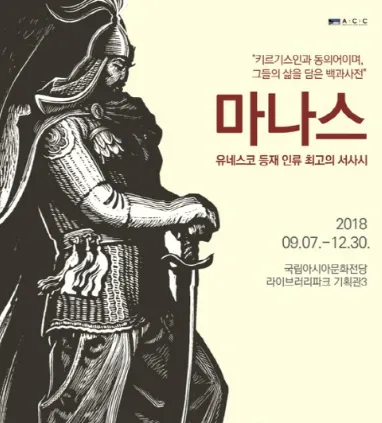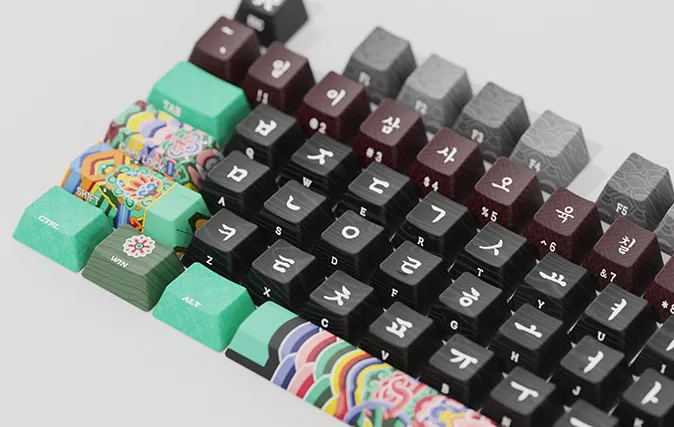Current Status and Characteristics of UNESCO Cultural Heritage Inscriptions in Five Central Asian Countries
The five Central Asian countries have a notably high proportion of intangible heritage among their UNESCO cultural heritage inscriptions, both internally and externally. As of 2023, UNESCO consists of 198 member states and 12 associate members. From an external perspective, the five Central Asian countries account for 61 items in UNESCO's Intangible Cultural Heritage listing program, which began in 1998, representing 8.4% of the total 730 inscriptions by all UNESCO member states. This serves as evidence of the depth and breadth of these Central Asian nations' historical and cultural diversity. From an internal perspective, what's even more significant is that joint inscriptions account for 52.4%, 45.8%, and 16.7% respectively across all categories, including not only intangible heritage but also world heritage and documentary heritage. This is a unique case that is difficult to find in other regions. For instance, while Korea, China, and Japan are among the world leaders in terms of UNESCO cultural heritage inscriptions, they have relatively few joint inscriptions. This can be interpreted as indicating strong homogeneity, bonds, and cooperative relationships among the five Central Asian countries across various dimensions.
Cultural heritage is a vessel that contains fundamental values (Solid Foundation) that communities have passed down and preserved across generations. This is evidenced by the living traditions of Nowruz which has expanded into a global festival, the tales of the philosopher-sage Nasreddin and records of Maulana, epic sagas of heroes like Manas, the cultural heritage space of Boysun, silk and weaving techniques, the history and cities of the Silk Road, pilaf the king of meals, petroglyphs left by ancestors thousands of years ago, the sacred Quran Mushaf, horses galloping through the majestic Tian Shan nature and eagles soaring through the skies, and music, performances and dance that continue to breathe life today.
Intangible Heritage | World Heritage | Memory of the world | Total | Note | |
Kazakhstan | 13(8) | 6(3) | 3 | 22(11) | (number) jointly inscribed items |
Kyrgyzstan | 15(8) | 3(2) | 1 | 19(10) | |
Tajikistan | 9(5) | 4(1) | 2(1) | 15(7) | |
Turkmenistan | 9(4) | 5(2) | 1 | 15(6) | |
Uzbekistan | 15(7) | 6(3) | 5(1) | 26(11) | |
Subtotal by category | 61(32) | 24(11) | 12(2) | 97(45) | As of 2023 |
Total UNESCO inscriptions | 730 | 1,223 | 496 | As of 2023 |
UNESCO Cultural Heritage and Creative Industries
However, many cultural heritage sites are facing sustainability threats due to rapid urbanization, industrialization, and climate change. UNESCO, recognizing that preservation alone is not sufficient, adopted the '2005 Convention on the Protection and Promotion of the Diversity of Cultural Expressions' to emphasize the active utilization of cultural heritage in the development of creative industries. In this context, UNESCO is working to connect creative cities through a global network by selecting them across 7 categories including 'Crafts and Folk Art', 'Literature', 'Music', 'Design', 'Media Arts', 'Gastronomy', and 'Film' to facilitate developing countries' entry into international markets and foster creative talent. Therefore, the five Central Asian countries need to seriously research and explore ways to link their cultural heritage - which has proven its competitiveness in the international community through UNESCO inscription - with creative industries for sustainable development through active utilization, moving beyond mere preservation.
Currently, the creative industry accounts for 6.1% of the global economy and is a high-value-added industry generating $4.3 trillion in value annually. It also provides more jobs for young people aged 15-29 than any other sector. Two years ago, the Korean drama 'Squid Game' aired on the global OTT platform Netflix, maintaining the world's top viewership for an extended period, and earned 1 trillion won from a 30 billion won investment. 'Squid Game' was primarily based on games we used to play with friends in our neighborhoods during childhood. The recently released Disney animation 'Moana 2' is also based on folklore from Pacific island nations. The luxury brand 'Gucci' opened Gucci Gaok inspired by Korea's traditional saekdong clothing. The Museum Foundation launched a dancheong-motif keyboard. Cultural heritage serves as a source material, creating high added value through fusion with various content forms including broadcasting, dramas, webtoons, characters, and luxury brand collaborations.
Cultural Heritage and Official Development Assistance (ODA)
As a model nation that has not only overcome poverty and achieved economic growth but also overcome colonial experiences, restored cultural identity, and enhanced social stability, Korea has reached a point where these success stories should not be kept to itself but shared through efforts with the international community. In this context, Korea is significantly increasing its Official Development Assistance (ODA). As a member of the OECD Development Assistance Committee (DAC), Korea is providing 6.2629 trillion won in official development assistance as of 2024.
Unlike the trend of other countries reducing their support for cultural heritage, Korea is significantly increasing its cultural heritage ODA. Among DAC member countries, Korea ranks at the top in terms of cultural heritage ODA scale. The National Heritage Administration's ODA has grown from 2.01 billion won in 2020 to 13 billion won in 2024 over the past five years. When combining projects conducted by the Asia Culture Center of the Ministry of Culture, Sports and Tourism, ODA through UNESCO institutions such as the UNESCO ICHCAP, and projects carried out by the Korea International Cooperation Agency (KOICA), the total cultural heritage ODA for 2024 is estimated to reach 25 billion won. Cultural heritage-related ODA projects in Central Asia for 2024 include the Samarkand Cultural Tourism Resource Development Project (National Heritage Promotion Agency) and Digital Cultural Resource Management System Construction and Cultural Content Development Capacity Building Project (KOICA) in Uzbekistan, as well as the Cultural Resource Management System Development (Asia Culture Center) and Traditional Craft Technology and Cultural Tourism Business Revitalization Project (ICHCAP) in Kyrgyzstan.
2020 | 2021 | 2022 | 2023 | 2024 | |
Total ODA | 2.7 trillion won | 3.3 trillion won | 3.9383 trillion won | 4.7771 trillion won | 6.2629 trillion won |
Korea Heritage Serive ODA | 2.01 billion won | 2.8 billion won | 3.7 billion won | 4.9 billion won | 13 billion won |
Ratio | 0.07% | 0.08% | 0.09% | 0.01% | 0.21% |
Directions for International Development Cooperation in Cultural Heritage between Korea and Central Asian Countries
ODA for cultural heritage preservation and restoration goes beyond mere support, playing a role in helping recipient countries restore their cultural independence and identity while promoting sustainable development. As one practical measure, there is a need to actively pursue content development, technical support, operational staff training, and knowledge transfer methods so that recipient countries can easily benchmark and adapt cultural heritage utilization programs that have already proven successful in Korea to suit their local conditions. Notable examples include Living Heritage projects, Cultural Heritage Night programs, Traditional Temple Heritage programs, Cultural Heritage Visit campaigns, World Heritage Festival, World Heritage Media Art projects, Royal Guard Changing Ceremony, Royal Palace Cultural Festival, Temple Stay, and craft product design competitions.
ODA for cultural heritage preservation and restoration goes beyond simple support, playing a role in helping recipient countries recover their cultural independence and identity while promoting sustainable development. As one practical measure, there is a need to actively pursue content development, technical support, operational staff training, and knowledge transfer methods so that recipient countries can easily benchmark and adapt successful cultural heritage utilization programs from Korea to suit their local conditions. Notable examples include Living Heritage projects, Nighttime Cultural Heritage events, Traditional Temple Heritage programs, Cultural Heritage Visit campaigns, World Heritage Festivals, World Heritage Media Art projects, Royal Guard Changing Ceremonies, Royal Palace Cultural Festivals, Temple Stay programs, and craft product design competitions.
KEUM Gi Hyung (seedspouch@outlook.com) / Founder and operator of the non-profit organization Heritage Lab for Creative Space. He lectures at Korea National University of Cultural Heritage and KAIST, and serves as an advisor to public institutions. As a member of the development generation, he has a keen interest in improving the quality of life in developing countries. He hopes his work experience at the Ministry of Culture, Sports and Tourism, UNESCO, and Vietnam will be put to good use. He co-authored 'Cultural Heritage and International Development Cooperation'(2024)












